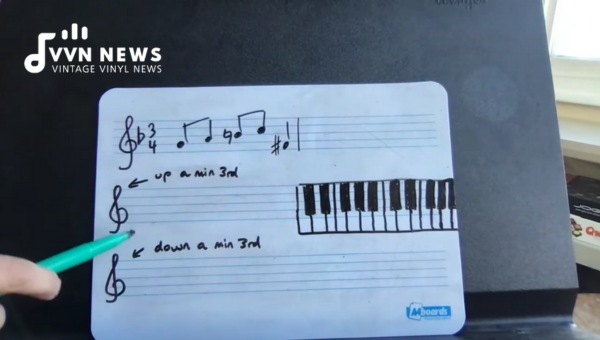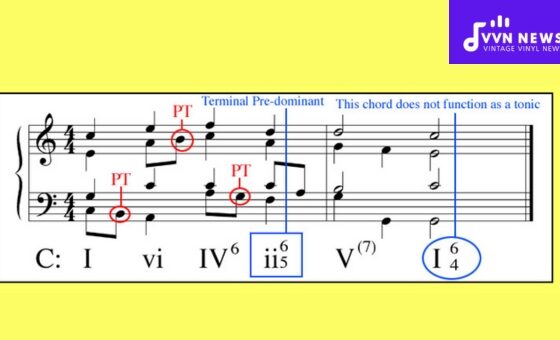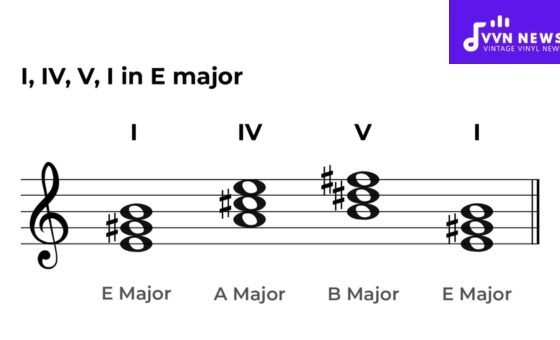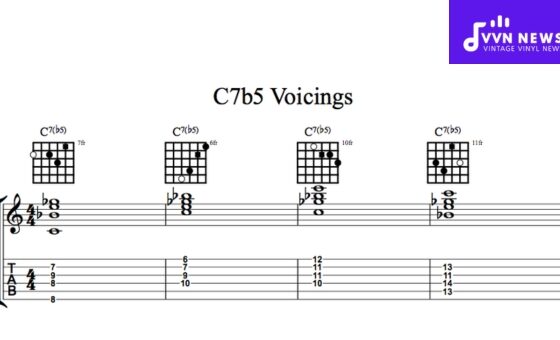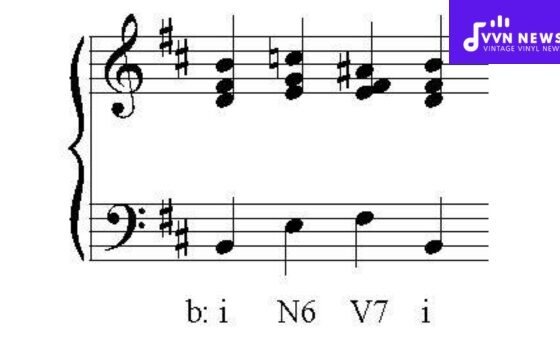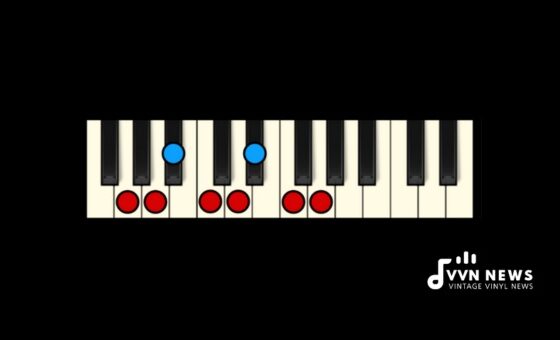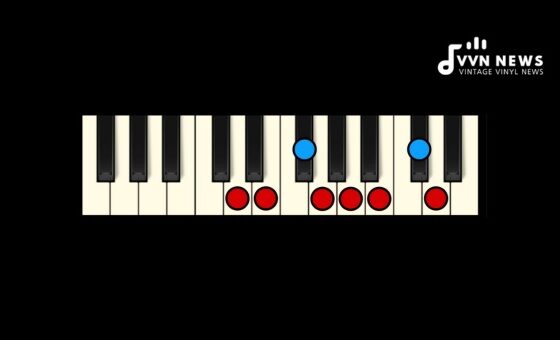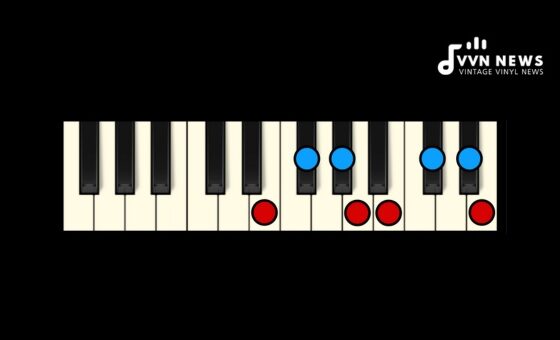As a musician or someone dabbling in the world of music theory, you might encounter situations where transposing a piece becomes necessary.
Whether it’s to accommodate a vocalist’s range or to create a different mood within a composition, transposition is a common but sometimes perplexing task.
Understanding how to transpose down a minor 3rd can open up new possibilities for your music and allow you to navigate these changes with confidence.
We’ll break down the steps needed to transpose your music down by this interval successfully.
This seemingly daunting process can actually be quite straightforward once you grasp the basic concepts and apply them consistently.
By following the guidance provided here, you’ll soon be transposing melodies and chords with ease, ensuring that your musical adaptability is as harmonious as the pieces you’re working with.
What Is a Minor 3rd Interval?
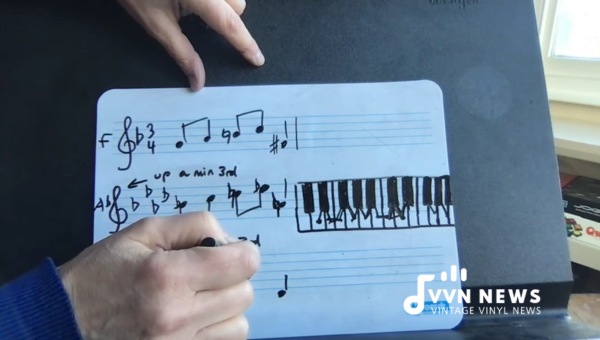
In the realm of music theory, the minor 3rd is an interval encompassing three semitones.
Picture a piano keyboard: starting from any note, if you count up three keys – including both white and black – you’ll land on a minor 3rd.
Starting from C, your minor 3rd would be E♭. This interval is renowned for its sad and melancholic sound, distinguishing it from the brighter major 3rd, which spans four semitones.
The minor 3rd is pivotal in crafting minor chords and scales that give pieces their emotionally rich undertones often heard in genres ranging from blues to classical.
Why Transpose Down a Minor 3rd?
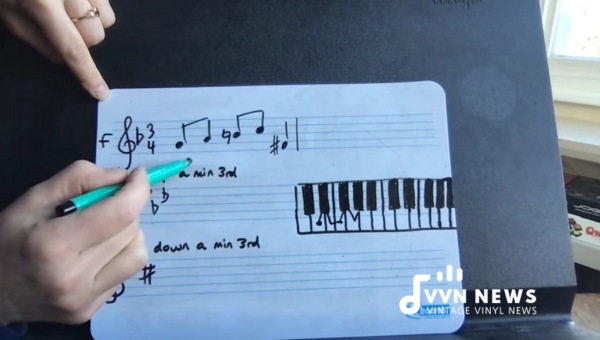
Transposing down a minor 3rd can serve many purposes in music composition and performance.
It is a skill that, once mastered, allows for flexible adaptation to various scenarios.
Vocal Comfort
One of the most compelling reasons to transpose a piece down by this interval is to accommodate a singer’s vocal range.
Doing so can place a song in a more comfortable key for the vocalist, reducing strain and improving performance quality.
Instrumental Constraints
Some instruments have limitations regarding range or ease of playability.
Tunes moved down a minor 3rd might fit better within an instrument’s sweet spot or make challenging passages easier to navigate.
Creative Expression
Musically, changing the key by transposing it down offers an alteration in mood.
Because minor intervals often add depth and melancholia to music, moving parts of your composition down by this interval could evoke the desired emotional response in your listeners.
Collaborative Compatibility
In an ensemble setting, you may find it necessary to ensure all instruments are in complementary keys.
Transposing parts of your score can create harmony between differing instrument tunings or across different instrumental types that have varying transposition conventions.
Given these rationales, it’s clear that learning how to transpose effectively is not just technical; it’s crucial for both musical integrity and expressive versatility.
With practice, it becomes second nature – further enhancing your capability as a musician or composer.
Also Read: How to Transpose Up A Minor 3rd [Elevate Your Music Ability]
How to Identify a Minor 3rd Interval
To swiftly identify a minor 3rd interval, first, listen for its distinct sound: the interval has a poignant and introspective quality.
However, when it comes to written music or playing by ear, there are practical steps and visual cues that can guide you.
Visual Identification on Sheet Music
When you look at sheet music, locate two notes of interest. For an interval to be a minor 3rd:
- There must be a distance of one and a half steps between the notes, which means one line note and one space note, assuming there’s no same-line or same-space repetition.
- They should be within exactly two degrees of each other on the staff — for example, from E to G (in any octave) would reflect a minor 3rd.
Keyboard Recognition
On a keyboard:
- Choose your starting note.
- Move three keys to the right (including both white and black keys).
- If the third key is black in relation to the white starting note (or vice versa), you’ve found your minor 3rd.
Audio Recognition
For auditory recognition, familiarize yourself with songs that start with this interval, like “Greensleeves” or “Smoke on the Water.”
Singing these tunes starting from any pitch can help solidify the sound in your ear.
With these strategies, identifying a minor 3rd becomes simpler. Listen closely for its haunting melody, observe notational patterns on sheet music, memorize its appearance on your instrument, and anchor it in memorable tunes for perfect recognition every time.
Also Read: How To Transpose Down A Perfect 4th [Improve Your Music IQ]
How to Transpose Down a Minor 3rd
Transposing a piece of music means shifting every note by the same interval.
When you’re tasked with moving a piece down a minor 3rd, you systematically lower each note by three semitones.
Let me walk you through the steps to make this process as smooth as possible.
Step-by-Step Guide
- Identify the Root Note: Start by pinpointing the root note of the key you’re currently in. This will be your reference point for the entire transposition process.
- Understand the Original Key Signature: Familiarize yourself with the original key signature to know which sharps or flats are being applied across the board.
- Determine the New Key: Move each note in your key signature down three semitones to find your new key signature. For instance, if you begin in C major (no sharps or flats), transposing down a minor 3rd takes you to A♭ major (with four flats).
- Map Out The Interval: For every individual note, count three semitones down. Using a piano keyboard as a visual guide can be exceptionally helpful here.
- Apply Sharps or Flats: Adjust any necessary sharps or flats based on your new key signature so that everything aligns harmonically.
- Check Your Work: Play through your newly transposed piece or use software tools like MuseScore to ensure all intervals are correct and that nothing sounds out of place.
- Revise if Necessary: If something doesn’t sound quite right, don’t hesitate to review and revise until everything fits perfectly within your new key.
Moving music down by a minor 3rd allows for greater versatility and expression in composition and performance.
Also Read: How To Transpose Down A Major Second [Must-Know Music Skill]
Challenges and Solutions in Transposing Down a Minor 3rd
When you’re tasked with transposing a piece down a minor 3rd, a few challenges can arise. Here’s how to confidently navigate these obstacles:
Understanding Key Signatures
One of the initial hurdles is grappling with the shift in key signatures. Your target key will have three semitones fewer than the original.
Solution: Familiarize yourself with the Circle of Fifths. This tool helps you easily find your new key signature.
Retaining Melodic Contour
Transposition risks altering the melodic flow of a piece.
Solution: Always move each note down by an interval of a minor 3rd, retaining relative distances between notes to preserve the song’s contour.
Accommodating Instrument Ranges
An instrument’s range may be incompatible with the transposed notes.
Solution: Consider octave adjustments if the transposed melody ventures beyond an instrument’s playable range. Be mindful not to lose energy or texture in the process.
Recognizing and Adapting Accidental Notes
Accidentals can complicate transpositions since they don’t always follow standard patterns across scales.
Solution: Pay extra attention to flats, sharps, and natural signs. They must also transpose accordingly, shifting three semitones down to maintain harmonic context.
Maintaining Chord Integrity
Chords built on transposed notes must be rearranged accurately to retain their quality (major/minor/diminished/augmented).
Solution: Break down chords into individual notes, transpose each note, then reassemble them into new chords respective of their minor 3rd descent. Use chord charts as a reference if needed.
By absorbing these concepts and steadily applying them to different pieces, you’ll soon find that what was once challenging becomes second nature.
Also Read: How To Transpose Up An Octave [Master This Musical Skill]
FAQs About Transposing Down A Minor 3rd
What exactly does ‘transposing down’ mean?
I am transposing down means lowering the pitch of a note or a sequence of notes by a specific interval.
Is transposing the same for all instruments?
Yes, the concept of transposing is universal, although the method can vary with different instruments and clefs.
Can I use software to transpose music?
Absolutely. Many music notation programs offer features that automatically transpose music for you.
How do I transpose chords down a minor 3rd?
Chords are transposed just like single notes. Three semitones lower every note in the chord.
Does transposing change the key signature of a piece?
Yes, when you transpose music, it often results in a change to the key signature, reflecting new sharps or flats.
Conclusion
Transposing down a minor 3rd may initially seem complex, but with a clear understanding of intervals and key signatures, it can become a manageable part of your musicianship.
Always remember to check each note and chord as you move them down three semitones, maintaining relative distances.
Whether you’re arranging for different instruments or adapting music for various vocal ranges, this knowledge is a valuable arrow in your quiver.
Embrace the process with patience, and you’ll soon find the beauty that lies within these transformative shifts in pitch.
